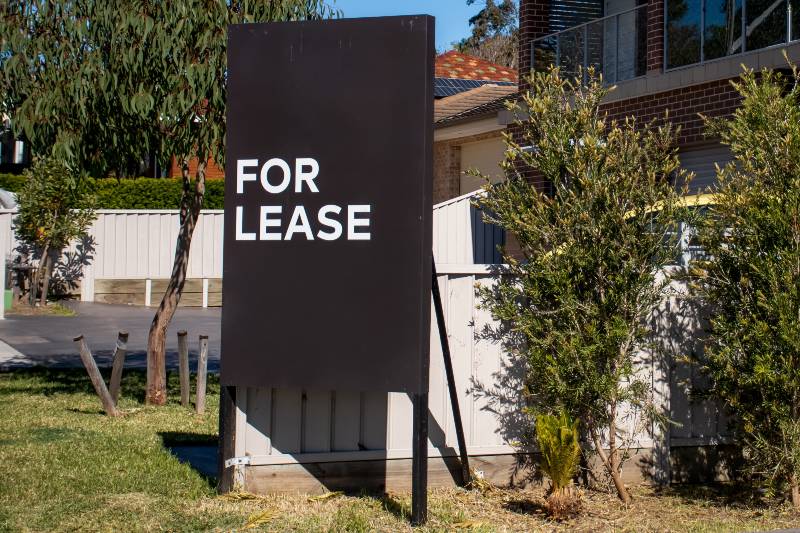Do you own commercial real estate in California? If you do, it could be time to take advantage of Proposition 13 — a landmark tax law that has helped many property owners save money on their taxes and pass the savings onto tenants. With over 40 years of experience helping businesses reduce their liabilities, we’re here to help break down how this powerful tax provision can have a positive impact on your bottom line. Read on to discover just how much Proposition 13 can benefit your commercial real estate investments!
According to Proposition 13, the yearly real estate tax on a property is capped at 1% of its assessed value. This assessed value can only be raised by a maximum of 2% per year unless the property undergoes a change of ownership.
Key Takeaways
- Proposition 13 offers commercial property owners a predictable tax environment by capping property tax increases, which can be especially beneficial for long-term investors.
- While providing tax relief, Proposition 13 can also influence property values, potentially deterring new investments or developments in the commercial real estate sector.
- As discussions around reforms or changes to Proposition 13 continue, commercial real estate investors should stay informed and proactive to navigate potential shifts in the market landscape.

History and Background of Proposition 13
In June 1978, California voters passed Proposition 13, a law that revolutionized the state’s property tax system and profoundly influenced tax policies across the nation. Its passage represented a taxpayers’ revolt, born out of mounting frustration and skyrocketing property taxes attributed to the state’s rapid postwar population growth, economic changes, and inflation.
Origins and Reasons for Implementation
The 1970s witnessed a period of severe financial strain for many California homeowners. Rapidly increasing property values and a property tax system tied to current market value led to spiralling property tax bills. This was a heavy burden, particularly for those on fixed incomes who saw their taxes increase dramatically even though their ability to pay did not.
In 1977, the state was running a significant tax surplus, yet property tax rates remained unabated. This led to a groundswell of disillusionment among taxpayers. Activists Howard Jarvis and Paul Gann exploited this taxpayer discontentment, crafting Proposition 13 as a constitutional amendment initiative to significantly reduce property taxes.
Key Provisions of Proposition 13
Proposition 13 introduced radical reforms in the method and rate of property taxation in California. They include:
- Tax Rate Cap: Proposition 13 placed an upper limit on the tax rate for real estate at 1% of the full cash value.
- Valuation Cap: It stipulates that property would be reassessed only upon change of ownership or completion of new construction, effectively freezing assessed property values at their 1976 level.
- Assessment Increase Limit: Even after reassessment, unless precipitated by sale or construction, the property value cannot increase by more than 2% per year.
- Two-Thirds Majority for Tax Increases: Proposition 13 also stipulates that state taxes cannot be increased without a two-thirds majority vote in both legislative houses or local voter approval.
This legislation resulted in sweeping changes and even today, its effects continue to be felt and debated.
Impact on Property Taxes
The passage of Proposition 13 transformed California’s property tax landscape significantly. Its most immediate impact was a sizeable reduction in property taxes. Statewide, property taxes fell by an estimated 57%, which amounted to about $6 billion in property tax revenue per year.
Proposition 13 capping property tax increases
Prior to Proposition 13, the property tax rate was, on average, about 2.67% of the market value, and there was no limit on annual increases. With Proposition 13, the tax rate was capped at 1% of the assessed value of the property at the time of purchase, and annual tax increases were limited to no more than 2% per year unless the property was sold or significantly improved.
This change fundamentally transformed the property taxation system from being tied to current market value to one based upon acquisition value. This means that under Proposition 13, two identical properties could have greatly different property tax bills simply due to different acquisition years.
Implications for Long-Term Commercial Property Owners
Commercial properties, a third of the total statewide assessed value, have shared in the benefits brought forth by Proposition 13. In fact, striking statistics show that the share of property taxes paid by owners of commercial properties has declined over the years as the share paid by homeowners has risen.
Long-term commercial property owners, in particular, stand to benefit immensely from Proposition 13 stipulations. Due to the restrictions on reassessment, commercial properties held for a long time can end up having effective tax rates far below 1%. This preferential tax treatment has allowed them to enjoy significant cost savings, thereby potentially offering an unfair competitive advantage over newer businesses paying higher taxes due to recent property acquisitions or leases.
Moreover, these long-term owners are also sheltered from unexpected increases in property taxes due to market fluctuations, which provides a greater degree of financial stability and predictability.
Despite these advantages, the system’s perceived inequity between older and newer, residential and commercial property owners has sparked considerable debate, with some advocating for a possible split-roll tax that distinguishes between commercial and residential properties. Nonetheless, Proposition 13 remains a key fixture in the Californian taxation landscape, continuing to significantly impact homeownership, public finances, and the competitiveness of businesses.
You might find it intriguing to delve into the depths of this article I wrote on the topic of Creative Financing in Commercial Real Estate. The insights shared within can significantly enhance your knowledge and proficiency in the world of CRE (Commercial Real Estate). So grab a cup of coffee, sit back, and immerse yourself in this valuable read!
Effects on Commercial Real Estate Market Dynamics Values
Proposition 13 has had a significant influence on commercial property values across the state. By restricting property tax rates and allowing reassessment of property values only in cases of sale or significant renovation, Proposition 13 has caused a decoupling of property taxes from current market value.
As a direct result, we see two effects. Properties that have been held for a significant length of time often report property valuations that are much lower compared to their current market price. For these properties, this results in a lower tax burden as compared to properties purchased or developed more recently.
Secondly, by stabilizing and reducing overall property tax liability over time, property values are indirectly driven up. As property taxes are a significant operating expense, a reduction in this cost allows an increase in the net operating income, ultimately enhancing a property’s overall value.
Impact on New Investments and Development
Proposition 13 also has significant implications for new investments and development. The policy can make investments more attractive by offering predictability in property tax liabilities. This certainty enables investors to calculate future costs without the unpredictability of market volatility.
However, this same dynamic can discourage property sales. A change in ownership triggers a reassessment of property to its current market value, which may lead to a significant jump in property tax liabilities. This often acts as a deterrent for new development or extensive property renovations.
More broadly in the real estate market, the stipulations of Proposition 13 could lead to supply constraints. Long-haul owners might hold onto properties rather than selling or develop, limiting the availability of commercial properties on the market and potentially leading to a rise in commercial real estate prices. However, it’s essential to bear in mind that this simplistic explanation doesn’t take other market dynamics and wider economic conditions into account.
Ultimately, Proposition 13 has been a significant factor in shaping California’s fiscal landscape, influencing property values, investment appetites, and real estate development tendencies across the state.
Comparison with Residential Real Estate
Absolutely, I’d be happy to provide a comparative analysis of the tax implications for commercial and residential properties, highlighting how they could potentially be influenced differently by tax policies.
Comparison with Residential Real Estate
Despite both falling under the broad category of real estate, commercial and residential properties have distinct characteristics that may result in different tax implications. These differences can arise due to variations in property use, ownership structures, tenant dynamics, and valuation practices.
Tax Implications
For commercial property owners, tax considerations typically revolve around income generation potential, depreciation allowances, and property tax assessments. A notable point is that commercial properties are often assessed on their income potential, which considers factors like rental income and occupancy rates. This can result in higher property values for tax purposes, especially in areas with strong market demand.
On the other hand, residential property taxes are typically computed based on the property’s assessed value, which can be influenced by factors such as the property’s size, condition, and recent sale prices of comparable properties in the same neighborhood. In many regions, residential properties are assessed less frequently and are often subject to homestead exemptions.
How Commercial Properties Might Be Affected Differently Than Residential Ones
Given the differences in assessment values, commercial properties might be affected differently than residential ones. One distinct impact can be seen in states like California, where tax policies like Proposition 13 can cause significant disparities in property tax liabilities.
Under such policies, commercial properties tend to experience less frequent turnover, mainly due to the financial disincentives associated with a change of ownership, which can trigger a reassessment of current market value and a higher tax bill.
By contrast, residential properties generally see more frequent turnover, with new homeowners often encountering higher property tax bills due to reassessment at the point of sale. As a result, residential properties could potentially bear a larger share of the property tax burden over time, which is illustrated in a report by the California Budget & Policy Center.
While both commercial and residential real estate contribute significantly to property tax revenues, the impacts of tax policies can differ substantially between them. Ultimately, these impacts are shaped by a myriad of factors, including property use, market dynamics, and the specifics of tax legislation in place.
Pros and Cons for Commercial Real Estate Investors
Investing in commercial real estate comes with a unique set of benefits and challenges that can heavily influence the investor’s decision-making process.
Benefits of Tax Stability and Predictability
With tax stability, commercial real estate investors can benefit from the predictability of their operating expenses. Since property tax rates are more stable and often capped at a certain growth limit, investors can better forecast their future financial obligations.
This makes budgeting and financial planning easier, leading to more confident decision-making and long-term planning. For instance, as per the guidelines of Proposition 13, property tax increases in California are limited to 2% annually, providing investors with certainty about their upcoming tax liabilities.
Predictability in tax also provides investors with an edge in terms of return calculations. Being able to accurately predict costs leads to a clearer picture of the property’s net operating income. Predictable income streams can make commercial properties more financially attractive compared to investments with higher volatility.
Potential Downsides and Criticisms
On the flip side, this stability can inadvertently create a disincentive for property owners to sell or significantly upgrade their properties. As changes in property ownership and extensive renovations can trigger a reassessment to current market values, property owners may avoid these actions to maintain lower property tax bills.
Additionally, the commercial real estate market might appear less dynamic with a lower property turnover rate. The tax policy could potentially contribute to slower market activity and urban redevelopment, providing fewer opportunities for new investment and innovation.
Another criticism pertains to the issue of tax equity. Commercial properties held for extended periods may be assessed at values significantly lower than their current market prices. This can create disparities in tax burdens among different property owners in the same market, leading to concerns about fairness in tax obligations.
While tax stability and predictability can offer significant benefits for commercial real estate investors, they also come with associated challenges. Understanding these dynamics is crucial for informed decision-making in commercial real estate investment.
Future Implications and Reforms
Proposition 13, since its inception in 1978, has been a topic of debate and discussion. Over the years, there have been calls for reforms, especially as California’s economic landscape and housing market have evolved. Some of the potential changes that have been discussed or proposed include:
- Split Roll Tax: One of the most debated reforms is the introduction of a “split roll” tax system. This would mean that commercial and industrial properties would be assessed differently than residential properties. While residential properties would continue to enjoy the protections of Proposition 13, commercial properties might be reassessed more frequently, leading to potentially higher taxes for commercial property owners.
- Reassessment Frequency: Another potential change could be in how often properties are reassessed. Currently, properties are reassessed only when they’re sold or undergo significant construction. Changes could involve more frequent reassessments, even if they don’t change hands.
- Exemptions and Thresholds: There might be discussions around changing the exemptions or thresholds, especially for smaller businesses or specific types of commercial properties.
How These Changes Might Affect the Commercial Real Estate Landscape
- Market Uncertainty: Any significant change to Proposition 13 could introduce a period of market uncertainty. Commercial real estate investors, developers, and businesses would need time to understand and adapt to the new tax implications.
- Shift in Investment Strategies: If commercial properties are subject to higher or more frequent tax assessments, it might deter long-term investments in commercial real estate. Investors might seek shorter-term holdings or look for opportunities in other states with more favorable tax environments.
- Impact on Small Businesses: Small businesses that own their commercial spaces might be disproportionately affected by any increase in property taxes. This could lead to increased costs, which might be passed on to consumers or result in business closures.
- Potential for Increased Revenue for Local Governments: On the flip side, if commercial properties are taxed at higher rates or reassessed more frequently, it could lead to increased revenue for local governments. This could be used for public services, infrastructure, and other community benefits.
- Change in Property Values: The commercial real estate market could see fluctuations in property values. If taxes increase, the overall cost of ownership rises, which might reduce demand and, consequently, property values.

Proposition 13 Pros and Cons
Pros:
- Limits property tax increases – Prop 13 caps tax increases at 2% per year, providing stability and predictability for homeowners. This helps many afford to stay in their homes.
- Protects against rapid spikes – By basing taxes on acquisition value, Prop 13 shields owners from significant tax hikes due to quickly rising property values.
- Encourages property improvements – Homeowners are not punished with higher taxes for renovating or adding onto their existing properties.
- Keeps property taxes reasonable – Prop 13 has helped restrain property taxes in California compared to other states.
- Benefits seniors on fixed incomes – Elderly homeowners on Social Security are especially protected from being priced out of their homes.
- Applies evenly – Tax limits apply fairly to all homeowners regardless of income level or property value.
Cons:
- Creates inequities – Neighbors with similar homes pay vastly different tax amounts based on when purchased. Newer buyers subsidize long-time owners.
- Loss of local revenue – Municipal budgets are strained by the lack of increasing revenue from property taxes. Local services and schools suffer.
- Commercial benefits – Large corporations reap huge savings that small businesses do not enjoy to the same degree.
- New development incentivized – Can promote sprawl since developers target new properties with higher taxes allowed.
- Locks in old assessments – Homes are taxed based on 70s values which undervalues many properties today.
- Burdens new home buyers – First-time home buyers pay higher taxes without benefiting from caps. Makes entry into markets harder.
- Favors the wealthy – Affluent homeowners with higher value properties receive greater savings from the tax limits.
Here is a table summarizing the key pros and cons of Proposition 13:
| Pros | Cons |
|---|---|
| Limits property tax increases | Creates tax inequities between owners |
| Protects against rapid spikes | Reduces local government revenues |
| Encourages property improvements | Primarily benefits large corporations |
| Keeps property taxes reasonable | Incentivizes new development over reuse |
| Benefits seniors on fixed incomes | Locks in outdated property assessments |
| Applies evenly to all homeowners | Burdens new home buyers with higher taxes |
So in summary, while Prop 13 provides stability and affordability benefits for many long-time homeowners, it also creates revenue shortfalls, inequities, and unintended consequences. There are reasonable arguments on both sides of this complex issue.
Proposition 13 Commercial Real Estate FAQs
Does Prop 13 Commercial Real Estate Apply to CRE properties?
Yes, Proposition 13 in California does apply to commercial properties in addition to residential properties
What are the benefits of Proposition 13 for commercial real estate investors?
Proposition 13 offers commercial real estate investors the benefit of tax stability and predictability. This makes budgeting and financial planning easier, allowing investors to more confidently plan for their future investments.
What are the potential downsides of Proposition 13?
The potential downsides of Proposition 13 include a disincentive to sell or upgrade properties due to tax increases triggered by ownership changes or renovations, a slower commercial real estate turnover rate, and disparities in tax burdens among different property owners.
How might potential reforms to Proposition 13 affect the commercial real estate market?
Potential changes to Proposition 13 could introduce a period of market uncertainty, shift investment strategies away from long-term investments, create higher costs for small businesses, increase revenue for local governments, and cause fluctuations in property values. It’s important for investors to understand the potential implications of these reforms before making any decisions.
Has Proposition 13 deterred new investments or developments in commercial real estate?
Proposition 13 has not been a major deterrent to new investments or developments in commercial real estate. While changes in property taxes can affect investment decisions, the long-term stability and predictability that Proposition 13 offers often outweigh any short-term tax concerns for many investors.
How does Proposition 13 offer tax stability for commercial property owners?
Proposition 13 limits how often properties can be reassessed and helps keep tax obligations predictable for property owners. This provides commercial real estate investors with more reliable financial planning, which can make long-term investments in the sector more attractive.
Conclusion
Proposition 13 is an important policy to consider when it comes to commercial real estate investments. It offers long-term stability with tax relief, but can also influence property values and markets. As potential reforms are discussed, investors should stay abreast of changes and weigh their options carefully.
Moreover, it pays to have a trusted expert on your side. If you’re looking for guidance navigating the complexities of Proposition 13 and commercial real estate investments more generally, call or schedule a free consultation with me today for advice tailored to your needs.
With insightful analysis and practical recommendations, I’m ready to help you evaluate what’s best for you and your increasingly valuable investment portfolio in the ever-changing landscape of California real estate.




